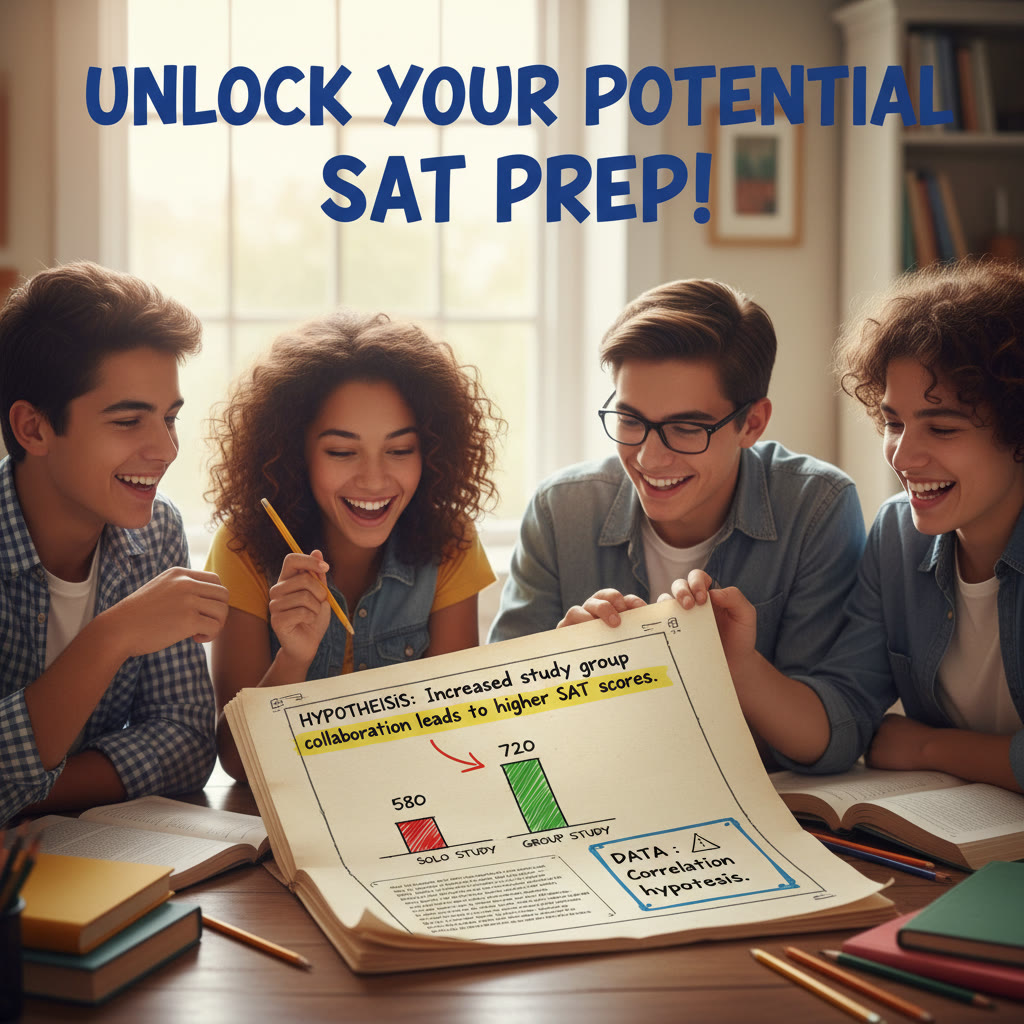Why science journal passages show up on the SAT (and why that’s good news)
Walk into any college classroom and you’ll find students wrestling with dense paragraphs, unfamiliar terms, and claims that demand close reading. The SAT isn’t trying to trick you—its science-journal passages simply borrow the way professional researchers write: precise claims, evidence, graphs, and cautious conclusions. Those passages test things you already use in school: interpreting data, weighing evidence, and following logical structure.
That should feel empowering. Science-journal passages reward clear thinking more than prior knowledge. You don’t need to be a biology major to answer the questions correctly; you need to be a careful reader. This blog walks you through what to expect, how to approach each passage type, and specific exercises to build the habits that lead to higher scores.
What makes a science-journal passage different from other SAT passages?
On the SAT, science passages typically come from popularized or academic sources and have a few characteristic features:
- Dense information: compact paragraphs filled with data, conditions, and qualifiers.
- Argument + evidence: the author often makes a claim and supports it with experiments or observational data.
- Graphs or tables: many science passages include figures that you must interpret.
- Technical vocabulary in context: words you might not know are usually defined or rephrased in nearby sentences.
Because the test focuses on reading skills rather than science facts, you’ll rarely need outside knowledge. Instead, you’ll be evaluated on how well you can pull meaning from words, sentences, and presented data.
First 60 seconds: how to start when you see a science passage
Time is tight. A smart opening routine gives you structure and confidence. Try this three-step starter:
- Skim the questions first (15–20 seconds): note which parts of the passage the questions target—some will ask about specific lines, others about the whole passage.
- Scan the passage (30–40 seconds): look for topic sentences, bolded figures, and any experimental descriptions like “participants,” “methods,” or “results.”
- Annotate quickly (10–20 seconds): mark where the main claim is, underline transition words (however, therefore), and circle numbers or dates. Keep it light—your goal is a map, not a transcript.
- Strategy: Ask, “What is the author’s central point?” Eliminate choices that focus only on a section rather than the whole.
- Tip: Watch for qualifier words like “suggests,” “could,” or “may,” which often reflect cautious scientific language.
- Strategy: Return to the exact sentence referenced. Read the surrounding sentences to capture context before choosing.
- Tip: Avoid answers that go beyond what the text explicitly states.
- Strategy: Replace the sentence in question with a short paraphrase. Which answer preserves that role?
- Tip: Tone in science writing tends to be restrained—look for language that softens claims (“likely,” “consistent with”).
- Strategy: Use evidence. For any inference, point to the line or figure that supports it.
- Tip: Dismiss answers that require new assumptions or specialized knowledge.
- Strategy: Answer the first part without glancing at the second. Then find the best supporting line. Sometimes multiple lines support a claim; pick the most direct one.
- Tip: If you’re torn between two evidence choices, prefer the one that states the data or observation rather than an interpretation.
- A) blue light produced higher rates in all trials.
- B) blue light produced higher average rates but variability existed.
- C) other studies have proven blue light is decisive.
- D) germination happened only under blue light.
- Possible evidence lines: one stating the numerical averages, another noting variability between trials, a third referencing other studies.
- Read labels and units first. A x-axis with “time (days)” vs “time (hours)” makes a huge difference.
- Note trend direction (increasing, decreasing, plateau) and any anomalies (outliers).
- Cross-check the figure with the passage—authors sometimes highlight a trend that a careful look will confirm or complicate.
- Look for rephrasing. Authors often follow a technical term with a simple explanation.
- Test answer choices in the sentence. Which one preserves the sentence’s meaning?
- Beware of trap choices that use words that “sound” scientific but don’t match the passage’s usage.
- Overreliance on prior knowledge. If a choice depends on outside facts, it’s likely wrong unless the passage explicitly states them.
- Ignoring qualifiers. Words like “may,” “suggests,” and “consistent with” change the meaning of conclusions a lot.
- Picking the strongest-sounding answer. Tests reward precision, not dramatic claims.
- Rushing through figures. Even a simple axis misread can flip your answer.
- Timed mini-sessions: Do one science passage at real pace, then spend 10 minutes reviewing every question you missed—note the exact line or figure that would have prevented the error.
- Annotation drills: For five passages, force yourself to annotate in under 40 seconds. You’ll build the habit of capturing the main structure quickly.
- Figure-first practice: Start with the graph or table and predict what the passage will conclude. Then read and compare—this sharpens your ability to link data with claims.
- Evidence hunts: After answering a question, always mark the best supporting line. Practice choosing the single best piece of evidence among plausible options.
- Week 1: Foundations—Five timed passages, focus on annotation and main-idea questions. Record recurring weaknesses.
- Week 2: Data week—Emphasize passages with figures. Practice translating visuals into text evidence.
- Week 3: Mixed intensity—Alternate timed sections with untimed deep reviews. Start practicing question pairs under timed conditions.
- Week 4: Simulation—Two full-length practice tests with complete review and error log. Sharpen pacing and stamina.
- Diagnostic assessment: identify weak question types rather than guessing.
- Tailored lesson plans: focus on figure interpretation if that’s your weakness, or inference strategies if that’s where you stall.
- Practice with feedback: immediate correction and explanation beats delayed review.
- Progress analytics: objective data showing improvement over time—where you started and how you’ve grown.
- Skim questions first to prioritize.
- Annotate the passage in 40 seconds—mark claim, evidence, and any figure.
- Answer detail questions by returning to the exact lines.
- For evidence pairs, pick the answer then find the most direct supporting sentence.
- Interpret figures by reading axes and units before drawing conclusions.
- Respect qualifiers—”may,” “suggests,” and “consistent with” are red flags that indicate careful conclusions.
This short prep helps you avoid aimless rereading. You’ll know where to return when a question asks about evidence or inference.
Common question types and how to tackle them
1) Main idea and purpose
These ask the author’s primary claim or reason for writing. Answering them means stepping back from details and summarizing the passage in one sentence.
2) Detail and reference questions
These point to a line or paragraph and ask what it means. They reward tight attention to wording.
3) Function or tone questions
These ask why an author included a sentence or how a word affects meaning. Science passages often use technical language as tools—note how definitions or contrasts fit the argument.
4) Inference and extension
Inference questions ask what logically follows from the passage, not what the author explicitly says. On science passages, these often hinge on data interpretation or experimental controls.
5) Evidence-based pairs
These questions are unique to the SAT: the first question asks for the best answer; the second asks which line supports that answer. Science passages make these natural because claims are built on data.
A realistic passage walkthrough (short example and reasoning)
Imagine a passage describing a study where researchers tested whether light wavelength influences plant germination. They report methods (three wavelengths, control group, 100 seeds each), results (germination rates), and conclude that blue light correlates with faster germination but note other variables could play a role.
Sample question pair
Question A: The passage suggests that the authors conclude blue light “may” enhance germination rates because:
Best answer: B. Why? The authors say “may” and include a caveat about variables; that wording aligns with an observed trend plus variability, not absolute proof.
Evidence question
Question B: Which sentence from the passage best supports the answer to Question A?
Best evidence: the sentence that reports variability between trials. On science passages, the author’s hedging language and the explicit data showing spread are the strongest support for cautious conclusions.
Interpreting figures and tables: a practical approach
Figures on the SAT are simplified, but they require precise reading. Approach them like a map:
Here’s a small table you might see in your notes while practicing. It illustrates common question types, average time to answer, and what makes them easy or hard.
| Question Type | Average Time | Difficulty Factor |
|---|---|---|
| Main idea / Purpose | 1:00 – 1:30 | Requires global reading; distractors are specific |
| Detail / Line reference | 0:30 – 0:50 | Must return to exact lines for context |
| Evidence-based pair | 1:20 – 2:00 (both parts) | Needs both comprehension and accurate line-selection |
| Inference / Interpretation | 0:50 – 1:20 | Can be tricky if answers require unstated assumptions |
Vocabulary and context: how to avoid getting stuck
Don’t panic when you encounter jargon. The SAT rarely expects specific scientific definitions; rather, it expects you to use context clues.
Quick practice: if the passage says “the enzyme exhibits saturable kinetics,” and later explains that “after a certain concentration, adding more substrate produces no further increase in rate,” you can deduce “saturable” means “limited response as concentration increases.” You didn’t need to memorize the biochemical definition to answer correctly.
Common pitfalls and how to avoid them
Practice routines that actually improve your score
Smart practice beats endless hours of passive reading. Here are routines that bring measurable gains:
How to build a month-long plan for science passages
If you have four weeks, here’s a compact plan that balances practice and reflection. Adjust pace depending on your baseline score and time availability.
Each week, keep a one-page error log: question type, why you missed it, what the right clue was. That log is where gains compound.

How tutoring can accelerate these gains (and what to ask for)
Personalized guidance shortens the path from practice to improvement. If you work with a tutor—say through Sparkl’s personalized tutoring model—you can get 1-on-1 guidance that targets your specific errors: customized study plans, expert tutors who model annotation techniques, and even AI-driven insights that highlight patterns in your mistakes.
When searching for tutoring help (or when planning sessions), ask for these features:
Coaching like this fits naturally for science passages because the errors tend to be patterned: misreading a figure, misidentifying evidence, or over-extending an inference. Targeted help resolves those patterns faster than unguided practice alone.
Final checklist to use under test conditions
On test day, keep this pocket-sized checklist in your head:
Parting thoughts: reading like a scientist, even if you’re not one
The SAT’s science-journal passages reward habits more than heroic knowledge. Think like a scientist: be skeptical, demand evidence, and connect claims to the data presented. Over time, you’ll develop instincts—fast, reliable moves that save time and boost accuracy.
And remember: the fastest route to steady improvement combines focused practice with tailored feedback. If you use resources like Sparkl’s personalized tutoring—expert tutors, 1-on-1 guidance, tailored study plans, and AI-driven insights—you can target your weaknesses and turn them into strengths without wasting hours on strategies that don’t fit your profile.
Science passages on the SAT are not obstacles; they’re opportunities to show clear thinking. With the right routine and a little focused help, you’ll read smarter, not harder. Happy practicing—and may your evidence always lead you to the right answer.
















No Comments
Leave a comment Cancel